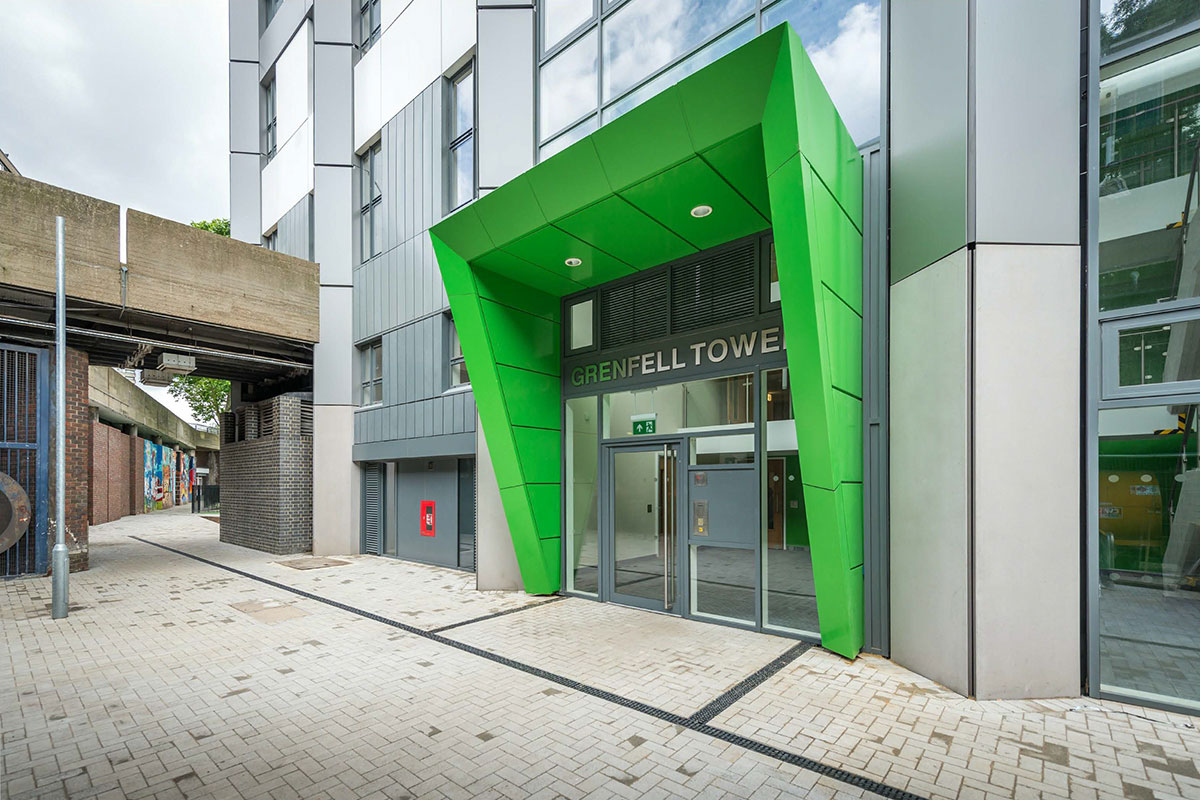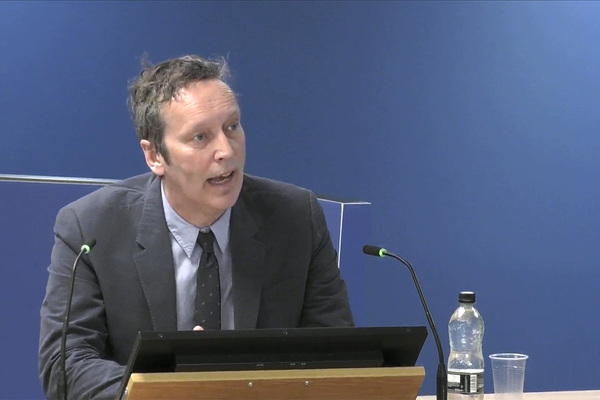You are viewing 1 of your 1 free articles
What has the Grenfell Tower Inquiry taught us about resident engagement?
As the Grenfell Tower Inquiry draws to a close, Peter Apps runs through how residents were ignored and the consequences, as well as what needs to change

It was obvious even before the flames had been extinguished that the Grenfell Tower story was going to involve the issue of resident engagement.
A WordPress blog written by the Grenfell Action Group was viewed by millions on the day of the fire. In particular, a story titled ‘KCTMO: playing with fire’ drew the eyes of the world.
“It is a truly terrifying thought but the Grenfell Action Group firmly believe that only a catastrophic event will expose the ineptitude and incompetence of our landlord, the KCTMO,” read the post from November 2016.
It is now five years on from that horrible day in 2017, and the details of how residents were not listened to before the blaze have been spelled out at the inquiry.
But have we seen meaningful change? Amid the recent reports of disrepair in social housing, many residents have publicly expressed a similar frustration to those in Grenfell Tower: not being listened to.
As the long inquiry into the fire draws towards a close, Inside Housing looks into what we have learned about what went wrong in west London and how it could be prevented from happening elsewhere.
A ‘resident-led’ organisation
Grenfell Tower was owned by the Royal Borough of Kensington and Chelsea (RBKC), with management services provided by the council-owned Kensington and Chelsea Tenant Management Organisation (KCTMO).
KCTMO, which managed all of RBKC’s 9,000 social homes in the borough, was, by its own description, “a resident-led organisation”. It had eight resident board members, including a resident chair, who were elected from the homes it managed in the borough. Alongside two council representatives and two independent board members, residents therefore had a large majority.
Surely this should have resulted in an organisation focused on the needs of residents?
Eddie Daffarn, a former resident of Grenfell Tower and one of the authors of the Grenfell Action Group blog, tells Inside Housing this was not the case.
“They put forward and encouraged a certain type of resident to take part. They made sure they were biddable, that they were not going to challenge what the executives were putting forward,” he says.
His view is that the simple number of residents involved in governance at an organisation is not necessarily a good guide. “What it really comes down to is the culture of the organisation. You can tick as many boxes as you want, but if the culture of the organisation is one that excludes residents, then you’ll have what happened at KCTMO occur,” Mr Daffarn explains.
It should be noted that KCTMO has rejected this accusation in its statement to the inquiry (see box).
Certainly, though, there is evidence of problems. In 2009, solicitor Maria Memoli was appointed to investigate long-standing concerns from residents. She found reasons for concern. “Words such as ‘malevolent’, ‘mistrust’, ‘malaise’ and ‘treated with contempt’ were often used [by residents],” she wrote in a report. “This is an unhappy culture and needs to change for the better.”
Her report also raised concerns about responding to repairs, citing residents who had waited decades for reported repairs to be addressed.
The Grenfell Inquiry heard further evidence of repairs problems continuing after her report.
KCTMO had an in-house repairs service, Repairs Direct. It set this up to take over after private contractor Connaught went bust and Morrison, which took over the contract, struggled to keep up with demand.
But Repairs Direct itself built up a major backlog, with 5,400 jobs outstanding by January 2017. Residents who gave evidence linked this drop-off in performance to the introduction of a centralised call centre, and the replacement of a local caretakers office on the estate where they had previously reported complaints.
Resident Betty Kasote described the call centre staff as “abrupt and rude” when she phoned to report a serious leak. “I felt like they thought I was a ‘troublemaker’ because I had been making complaints,” she said.
Nonetheless, satisfaction ratings with KCTMO’s repairs service were high: ranking around 90% to 95%.
But a witness statement of a former employee of Repairs Direct cast doubt on this at the inquiry last year. “We had to maintain over a 90%-95% satisfaction rate, so if I was to make 10 calls who gave marks under six,
I would have to call another 10 residents to make sure the percentage went higher,” they said.
“In my view, these statistics did not provide a true picture of the repairs carried out. When I commenced employment… the ethos was to select specific jobs [that would] guarantee a positive reaction to the works – for example, a tap repair – to bolster the percentage.”
This practice was denied by the former managing director of Repairs Direct.
But Mr Daffarn says: “I tell you, if you walked round any TMO estate you would struggle to find anyone who had a good word to say about the TMO. They were experts at putting these stats out there and the reality for residents was completely different.”
Such issues are a concern if they are replicated elsewhere. Benchmarking figures for resident satisfaction will be a key part of the new regulatory framework and for it to work, the numbers need to be a genuine reflection of services.
“I tell you, if you walked round any TMO estate you would struggle to find anyone who had a good word to say about the TMO”
The inquiry has also heard about issues with KCTMO’s complaints process. If residents lodged a complaint, they were required to go through a three-stage appeal process, which took months.
“Most people would engage with KCTMO’s complaints process once, and they would find out it wasn’t worth complaining. They would discover that if they had a repair, it was far better to get the repair carried out themselves because essentially it was a non-functioning organisation,” says Mr Daffarn.
This difficulty with lodging individual complaints is partly why Mr Daffarn and neighbours set up the Grenfell Action Group and Grenfell Compact (a group representing residents from the tower), particularly amid major concerns about the refurbishment work.
“All I was doing and all the other representatives of residents were doing was canvassing concerns in the tower and trying to bring them to the attention of the TMO,” Mr Daffarn says.
Refusing to meet
KCTMO initially refused to meet with the group, branding it “a showcase for Mr Daffarn” in emails.
There was also darker evidence of hostility towards Mr Daffarn. When he began raising concerns in 2011, Laura Johnson, director of housing at RBKC, instructed KCTMO to check his tenancy status. “Could we do just a bit of checking on his tenancy background, he inherited it she thinks but unclear of circumstances,” wrote Robert Black, chief executive of KCTMO, in October 2011.
KCTMO’s statement to the Grenfell Tower Inquiry
In a statement to the Grenfell Tower Inquiry, a lawyer representing Kensington and Chelsea Tenant Management Organisation (KCTMO) defended its record.
James Ageros QC, appearing for the organisation, said: “The TMO doesn’t accept that it ever adopted a dismissive attitude towards residents or indeed to their complaints and concerns.”
He said KCTMO did acknowledge that its relationship with some residents was “sometimes strained and difficult”. Mr Ageros cited local opposition to the construction of a school and the closure of an estate management board as responsible for “souring” the relationship between the organisation and residents on the estate that contained Grenfell Tower.
He said KCTMO put “considerable effort and resources into resident engagement” and was a “resident-led organisation”. He also cited a door-knocking exercise, several outreach events and an increase in the number of resident associations under chief executive Robert Black.
Mr Ageros said complaint-handling was “always a priority for the TMO” and defended its three-stage process, which it said was well publicised in newsletters and on its website.
The lawyer stated that the fire was “not caused by ‘the malign governance of a non−functioning organisation’”, but instead it “arose from the widespread and deep−rooted blindness within the private and public sector to the inherent dangers of materials regularly used in the building industry”.
Ms Johnson claimed the checks were to determine whether Mr Daffarn was a tenant or a leaseholder.
But Mr Daffarn feels it is evidence of hostility towards him for raising complaints. “The TMO treated me like I was a criminal, like I had no right to raise the concerns that I raised, that I was a troublemaker,” he says.
The inquiry has also heard that the blog he contributed to, which raised several fire safety issues, including concerns about the reliance on the stay put advice and access for fire engines, was blocked from KCTMO servers so that staff could not read it.
It was branded “agitating” in internal emails, with the in-house legal advisor asked to check whether or not it could be considered libellous. Mr Daffarn’s co-blogger, Francis O’Connor, was sent letters by the council’s solicitors asking him to remove content from the blog.
The inquiry has heard lengthy evidence about a leaseholder group led by resident Shah Ahmed, who raised multiple concerns in the years before the fire.
“The TMO treated me like I was a criminal, like I had no right to raise the concerns that I raised, that I was a troublemaker”
As residents’ anger about the refurbishment mounted, KCTMO board minutes noted it was “agreed to hold no more public meetings [on the refurbishment] because of the stand being made by the… leaseholder group”.
Instead, communication was switched to newsletters. Peter Maddison, former director of assets and regeneration at KCTMO, told the inquiry this minute was “inaccurately recorded”, and the real reason for stopping meetings was that they were “poorly attended”.
While none of the residents knew about the risk of a cladding fire, they did raise pertinent safety issues. Mr Daffarn, for example, submitted a Freedom of Information request that would have revealed problems with the tower’s smoke extraction system. But it was rejected by KCTMO, saying that releasing the information “could cause Mr Daffarn to raise more queries on his blog”.
Mr Daffarn also raised issues with a broken fire door self-closer, which was also rejected. The fact that many were broken on the night of the fire has been deemed a “key event” in the lobbies filling with smoke and many of the residents becoming trapped and dying.
“You know very quickly whether you are being listened to and respected, or whether you are just there for a box-ticking exercise”
What does Mr Daffarn feel needs to change? He is clear that the issue is about more than processes. “The TMO had a process of resident involvement, but they were the most resident-unfriendly organisation,” he says.
He wants to see organisations genuinely listening to residents. “You know very quickly whether you are being listened to and respected, or whether you are just there for a box-ticking exercise. Consultation at the TMO meant them telling us what they were going to do to us.”
For those landlords and housing managers that are performing very poorly, however, he feels the only solution is regulation. “At Grenfell United, we get letters from other residents up and down the country. We are not alone. The changes that need to come through the white paper need to deal with that bottom 20% of really rogue, poorly performing organisations,” he says.
With the bill yet to go through parliament, its efficacy remains to be seen. But change does not need to wait for laws and five years on from Grenfell, it is overdue.
Sign up for our fire safety newsletter
Already have an account? Click here to manage your newsletters












